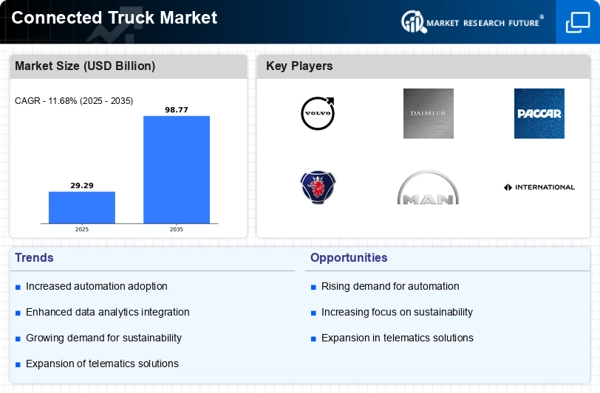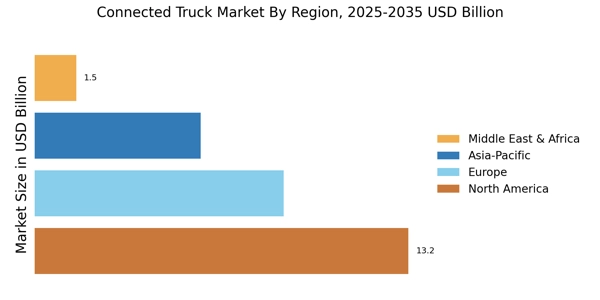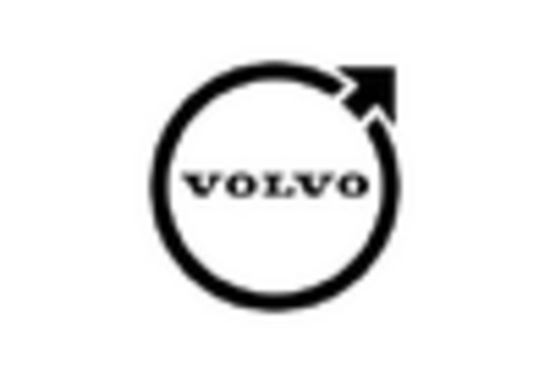The Connected Truck Market is currently characterized by a dynamic competitive landscape, driven by technological advancements and an increasing emphasis on sustainability. Major players such as Volvo (SE), Daimler (DE), and PACCAR (US) are at the forefront, each adopting distinct strategies to enhance their market positioning. Volvo (SE) focuses on integrating advanced connectivity features into its trucks, aiming to improve fleet management and operational efficiency. Daimler (DE), on the other hand, emphasizes electric and autonomous vehicle technologies, positioning itself as a leader in sustainable transport solutions. PACCAR (US) is leveraging its strong supply chain capabilities to enhance product offerings, particularly in the realm of connected services, thereby shaping a competitive environment that prioritizes innovation and customer-centric solutions.
In terms of business tactics, companies are increasingly localizing manufacturing to reduce costs and enhance responsiveness to regional demands. Supply chain optimization remains a critical focus, particularly as global logistics challenges persist. The market structure appears moderately fragmented, with several key players exerting substantial influence. This fragmentation allows for niche players to emerge, yet the collective strength of established companies like Scania (SE) and MAN (DE) ensures a competitive equilibrium that fosters innovation.
In August 2025, Scania (SE) announced a strategic partnership with a leading telematics provider to enhance its connected truck offerings. This collaboration aims to integrate real-time data analytics into fleet management systems, thereby improving operational efficiency and reducing downtime. The strategic importance of this move lies in Scania's commitment to leveraging data-driven insights, which could potentially set new benchmarks in the industry for operational excellence.
In September 2025, Daimler (DE) unveiled its latest electric truck model, equipped with cutting-edge connectivity features designed to optimize route planning and energy consumption. This launch not only underscores Daimler's commitment to sustainability but also highlights its strategic focus on integrating AI technologies into its product line. The implications of this development are profound, as it positions Daimler to capture a growing segment of environmentally conscious consumers and businesses.
In July 2025, PACCAR (US) expanded its connected services portfolio by introducing a new predictive maintenance feature that utilizes machine learning algorithms. This innovation aims to minimize unexpected breakdowns and enhance vehicle uptime. The strategic significance of this initiative is evident, as it aligns with the broader industry trend towards proactive maintenance solutions, thereby enhancing customer satisfaction and loyalty.
As of October 2025, the Connected Truck Market is witnessing a pronounced shift towards digitalization, sustainability, and AI integration. Strategic alliances are increasingly shaping the competitive landscape, enabling companies to pool resources and expertise to drive innovation. Looking ahead, competitive differentiation is likely to evolve from traditional price-based competition to a focus on technological innovation, enhanced supply chain reliability, and sustainable practices. This transition suggests that companies that prioritize these elements will be better positioned to thrive in an increasingly competitive environment.


















Leave a Comment